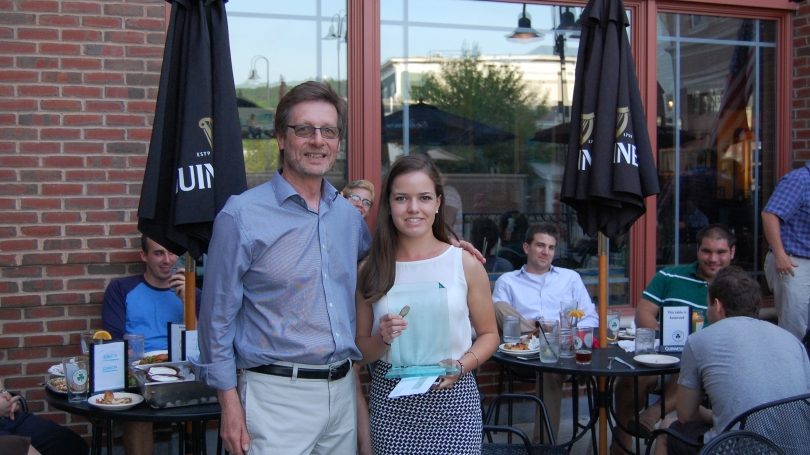
- Undergraduate
- Research
- Off-Campus Study
- News & Events
- People
Back to Top Nav
Back to Top Nav
The Adam N. Brown '97 Memorial Fund is an endowment established at Dartmouth College by the family and friends of Adam Brown, Class of 1997, to celebrate his life and perpetuate his energy, innovation, and enthusiasm. Adam was a prospective major in Geography when he died of cancer in 1994. The award is presented to recognize the best written work in Geography in an academic year. In accordance with the wishes of the family and the faculty, the student need not be a major in Geography. The names of the successive recipients of the award will be engraved on a plaque displayed in the Geography Department.
This years Adam N. Brown '97 award goes to Carly Schnitzler '16 for her paper "Meat with Conscience but Conscious: An Alternative." The title refers to recent developments in in-vitro or “cultured” meat, and its potential to help sustainably feed a world population that is both growing and increasingly hungry for animal protein. As Carly notes in her paper, contemporary livestock production practices are clearly unsustainable on many counts. On a global scale, the United Nations estimates that livestock account for some 18 percent of greenhouse gas emissions. Livestock and feed production together are also major drivers of deforestation, biodiversity destruction, and soil erosion. The industrial-scale farms known as concentrated animal feedlot operations, or CAFOs, may produce meat relatively efficiently, but at the expense of animal and worker welfare, as well as the livability of local environments. And then there are the increasingly worrying human health consequences of the industry’s routine use of hormones and antibiotics.
Carly’s paper documents all these problems, and then turns to the question of how and whether in-vitro meat might help to address them. She traces the history of the idea—which, surprisingly, Winston Churchill wrote about in 1932—and shows how the technology has developed over the past several years. Her explanation is remarkably clear, and interspersed with references to the individual scientists and organizations who are hoping to see cultured meat become the meat of the future.
What would this require? Carly takes up this question in the last section of her paper. It is already possible to produce edible meat in a laboratory setting. While one highly publicized taste test of cultured meat burgers found them “a bit dry and lacking in flavor,” more and more scientific teams are optimistic about its prospects. As Carly notes, the main challenges are economic—production costs are still far, far too expensive—and cultural. In other words, even if cultured meat is perfectly palatable and demonstratively better for the environment and human and animal health, its commercial viability will depend on overcoming the “ick factor.” Impressively, Carly supplemented published analyses of this problem with an expert interview and a survey of 103 Dartmouth students. The latter found that respondents were more open to the idea of eating cultured meat once provided with information about the production process and its environmental benefits.